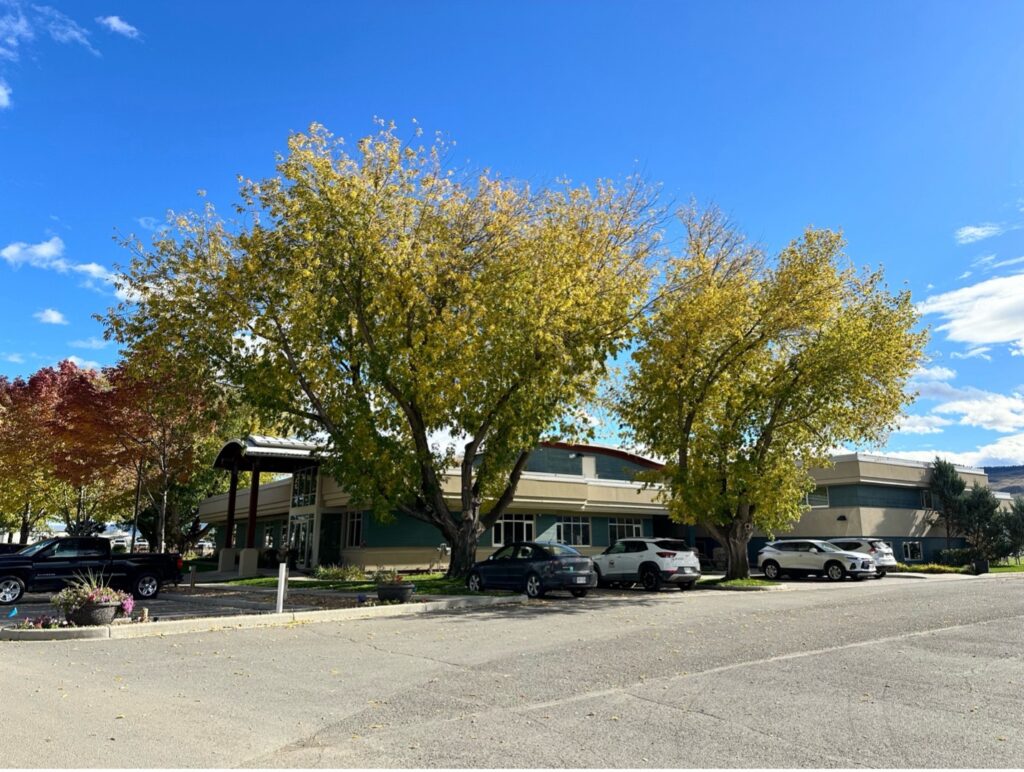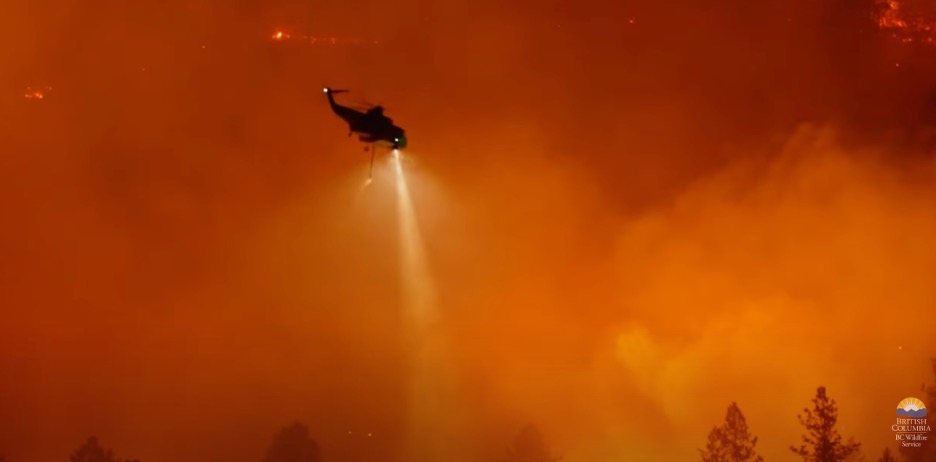The BC Wildfire Service (BCWS) integrated night vision technology into fire suppression operations for the first time during the 2024 season. This advancement allows the organization to conduct aerial operation objectives on a 24-hour scale, ensuring a more effective and efficient wildfire response.

The province of British Columbia has seen severe impacts from annual wildfire seasons. The area of the Thompson-Okanagan area can be particularly vulnerable with hot and dry weather bringing temperatures reaching 35-40°C (Zussman, 2024). These extreme conditions pose challenges during wildfire season as there is a higher risk of ignition. “This was the first season we looked to fully integrate night vision operations into our daily operations,” says Jarrett Lum, BCWS Aviation Specialist during an interview at the Provincial Wildfire Coordination Centre in Kamloops on October 4, 2024. Lum explained that this technology consists of Night Vision Goggles (NVG), a form of Night Vision Imaging System (NVIS). “The goggles can amplify light up to 60,000 times,” allowing light detection from miles away said Lum. Traditionally, the BCWS performs ground crew and heavy equipment operations at night, however, aircraft were required to ground after legal daylight under Visual Flight Rules. By integrating night vision technology into wildfire response, the organization can extend hours of aerial operations.
This season, BCWS deployed two aircrafts equipped for night vision flights. The two helicopters are modified to reduce the internal cockpit light to not interfere with the NVG devices, and they are equipped with a steerable searchlight to navigate terrain. Lum noted that the first aircraft was primarily utilized for observing, reconnaissance, and detection, flying 31 missions during its contract between July 11 and August 28. The second, helicopter, equipped with a helitanking system, performed 14 tanking missions during its contract from August 1-28, recorded Lum. He explained this system, with a water tank attached to the belly of the helicopter, is used because the limited field of view and depth perception can pose hazards when dealing with a long-line bucketing system in challenging terrain. Stationed in Penticton, these helicopters collectively flew 171.1 hours at night from Jul 11 to August 28 in the Kamloops Fire Centre and the Southeast Fire Centre stated Lum. They actioned several wildfires, including the Shetland Creek wildfire (K70910), and contributed to the detection of 24 new starts.

The success of these night vision operations is closely tied to the skill and knowledge of the personnel involved. Lum explained that each aircraft flies with one or two advance NVIS-certified pilots and a BCWS Trained Observer to coordinate operations. The helicopter pilots hired by the BCWS are each highly trained and have experience with wildfire and mountainous terrain. Lum stated the training for BCWS Trained NVG Observers is outsourced where personnel complete three days of ground school, three nights of flying, and a test. This specialized training allows the BCWS Trained NVG Observers to work with coordination centres and ground crews, providing information for wildfire operations.
The night vision goggles have proven to be a valuable resource for detection and reconnaissance, being the eyes in the sky for crews on the ground. The BCWS NVG Trained Observers work with fire centres and ground personnel to help “assess fires, their growth, their behaviour, their distance to values at risk, find access points, … and effectively [position resources]” said Lum. Because the goggles allow a high degree of amplified light, small fires can be found more easily at night. Bryce Moreira, BCWS Aviation Preparedness Officer explains they can utilize this technology to “assess where lightning strikes have started new incidents” (BC Wildfire Service, 1:45). The Government of British Columbia records over 60% of wildfires are lightning and naturally caused (Government of British Columbia, 2023). Lum stated that because of the “decrease in temperature and an increase in relative humidity, the water [tanking] can be more effective at night.” During the evening, fire activity is significantly lower and is more susceptible to suppression efforts. The NVG technology is providing several advantages for wildland firefighting.
With the many advantages of NVG, come certain challenges. Lum explained that the goggles only allow a 40°field of view as opposed to 200° view of the naked eye. This requires constant scanning of the personnel’s surroundings. There are several considerations to be made when working with 24-hour aerial operations. Operational staff and dispatchers in fire centres, fuel, water, and pilots can be limited resources that are required to support the work of NVG helicopters and personnel, and must be balanced during the day and at night explained Lum.

The BC Wildfire Service will spend time in the winter months reflecting on the successes and challenges faced during the first season of using NVG technology and will look to make adaptions for future success accordingly, said Lum. He mentions that the organization is looking to equip additional helicopters with NVG capabilities as well as increase personnel to support the NVG resources. When asked if there was anything Lum would like to share with the public about NVG technology for wildfire suppression, Lum said, “[it’s] a very interesting and valuable tool that we are continuing to learn about.” As the organization continues to explore the full potential of the NVG technology, it is clear it will play an increasingly important role in wildfire suppression in British Columbia.
References
BC Wildfire Service. (2024, August 21). How we use night vision technology. BC Wildfire Service. https://www.youtube.com/watch?v=YImFW6UtE4o
Government of British Columbia. (May 18, 2023). What causes wildfire? Government of British Columbia. https://www2.gov.bc.ca/gov/content/safety/wildfire-status/wildfire-response/what-causes-wildfire
Lum, Jarrett. (October 4, 2024). Personal Communication.
Nessman, Cali. (October 4, 2024). Provincial Wildfire Coordination Centre [Photo].
Zussman, R. (2024, October 11). B.C. sees record-breaking temperatures during unusual fall heat wave. Global News. https://globalnews.ca/news/10614349/bc-heat-wave/
Instead of saying: conduct aerial operation objectives on a 24-hour scale, ensuring a more effective and efficient wildfire response.
Try explaining it in a way that is easier to understand. What do you mean by that? Does it mean they can use the equipment in helicopters and airplanes to detect fire 24-hours, even when it’s dark and the fire is not visible with the naked eye?
—–
Instead of saying: night vision technology
Say what they are. Are they night vision goggles?
——-